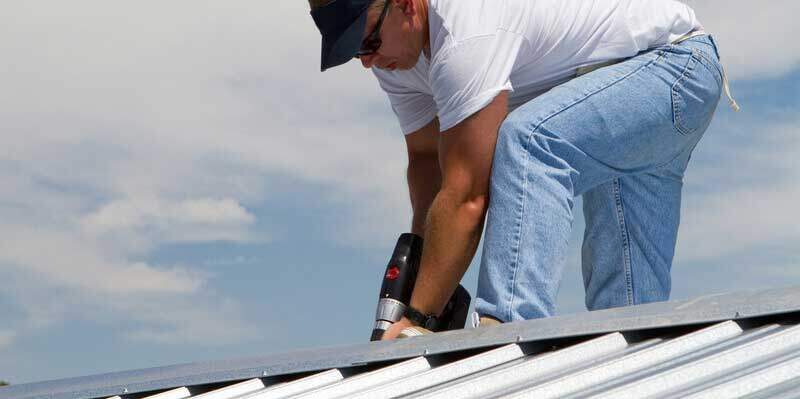Once upon a time, someone said it was impossible to walk on metal roofs, and a great myth was born.
In the real world, you can indeed walk on metal roofs, but how and where will depend on the style of roofing you’ve chosen. In fact, metal roofs can stand up to you walking on them better than ceramic tiles and some other roofing systems. Even asphalt gets damaged from repeated traffic, something that isn’t necessarily true of metal. Generally speaking, it is as safe to walk on a metal roof 30 or 50 years after installation as the day it was installed.

4 Steps for Walking on Metal Roofs
- The first thing to do is check the manufacturer’s advice for their recommended method of walking on that particular roof product. That said, some suggestions are:
- Standing seam roofing can be walked on pretty much anywhere without damaging it.
- Metal tile roofing (ribbed panels that resemble ceramic tile or shake) should be walked on in the lower spots, closer to the roof decking.
- Corrugated panels are also safe to walk on as those are screwed right onto the roof decking. It is a good idea though to walk on the lower parts of those panels.
- When it comes to metal shingles, it is recommended to walk on the upper half of the shingle panel, where there is minimal airspace between the metal. If you think you may have areas that could get repeated foot traffic you will want to consider installing foam backers on those shingles. This will help firm up those areas to better handle foot traffic.
- General advice is: Walk closest to the areas around the decking, avoiding laps and ribs.
- Wear soft-soled shoes.
- If it feels like you’ve got debris underfoot, then be careful not to grind it in or you could damage the metal surface.
Choose the Right Footwear
To get started, you need good shoes. Metal roofs are more slippery than some other roofing products, so you must wear the right footwear in order to safely walk on your roof. It should be a soft-soled rubber bottom that almost feels like it’s gripping the roof – it should feel somewhat sticky, especially on hot days. Plus, it needs to be full-foot coverage, not sandals or flip-flops, and not thread-bare old sneakers that can’t handle gravity and steeper angles.
Don’t wear heavy, rigid work boots because these can damage the roof. You need a pliable, flexible shoe with that sticky grip mentioned earlier. Maybe surprisingly, a lot of roofers like shoes like Chuck’s All-Stars, tennis shoes, Converse, and skate shoes, because they’re often completely flat soles intended for good grip.
Make sure your shoe’s soles are clean, too. Any gravel stuck in grooves and some kinds of dirt can damage or scratch your roof – plus, it can interfere with your traction when walking.
Please don’t underestimate the value of the right footwear, as even professional roofers fall from roofs with fatal results. And if you’re uncomfortable going on the roof, or you’re scared of heights, then simply don’t do it – get a buddy or a professional who’s confident enough to do it in your place. Going on the roof takes confidence.
Wait for a Clear Day
Wet metal roofs are dangerous to walk on, and even professionals will try to reschedule until Mother Nature cooperates. Sometimes, that might not be possible if you’ve got a pressing leak that needs to be mitigated.
Listen to the professionals, who advise on rainy days: “Use a safety rope, wear proper rubber footwear, wear a safety harness, safety glasses, gloves, anchors, and, of course, use a fall-protection system. Pay attention to every step, walk slowly and with caution.”
Be Safe
We’d be remiss if we neglected to mention fall protection. OSHA standards dictate that fall protection is a must for any roofing work. We all know that a lot of work happens without fall protection in place – but a lot of falls happen too, and some reports are that 40% of construction-fall-related deaths come from roofing falls, with a third of those being from just 20 feet. Fall protection kits can be bought for as little as $100, including a lifeline, mount and harness, so they’re a good investment that can literally save your life.
Questions? Need pricing?
Please call us toll-free at 1-877-833-3237
with any questions or quote needs! We are here to help.
Customer service and pricing available from 8:00 am to 5:00 pm MST Monday – Friday.





